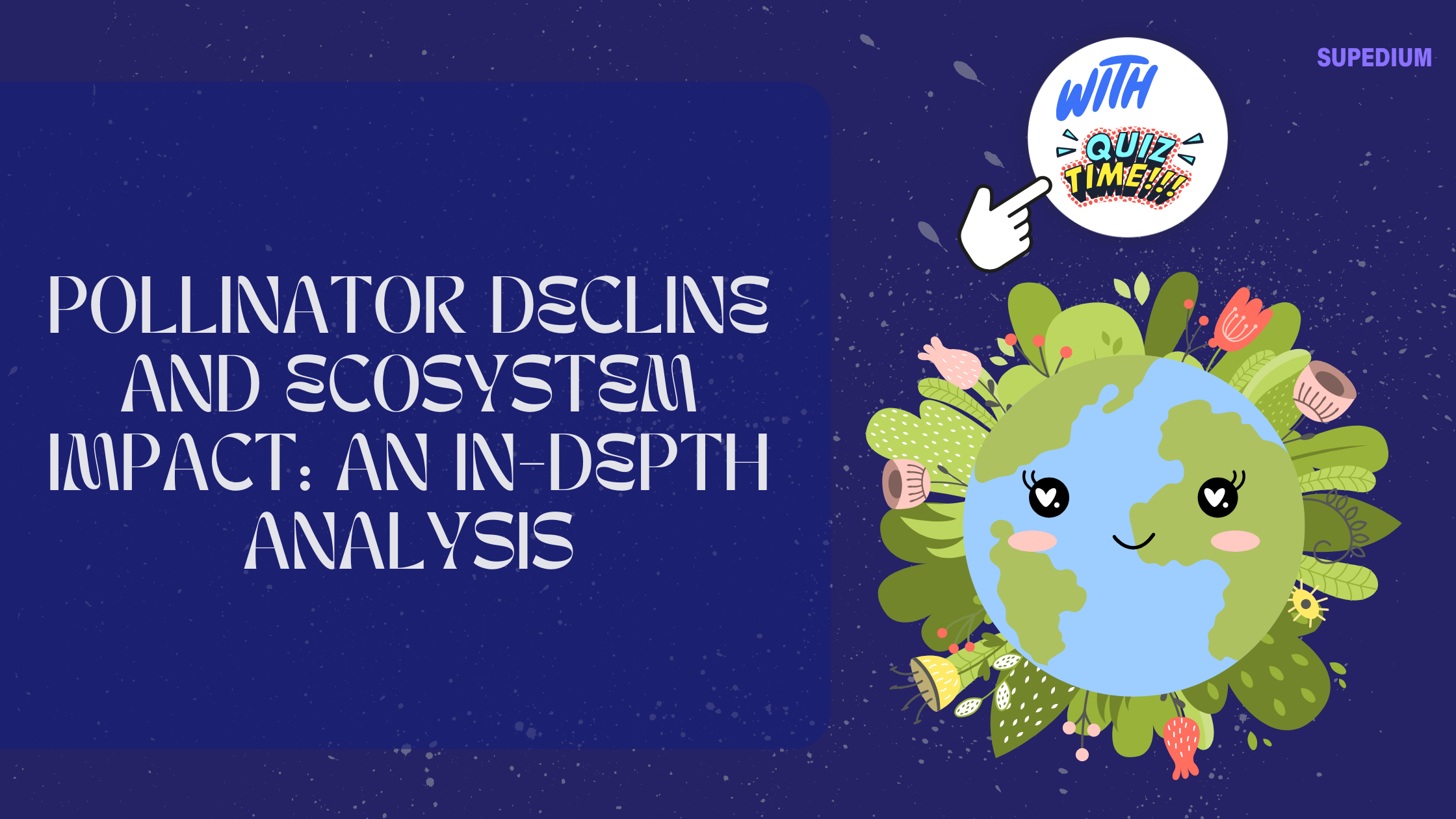Table of Contents
![]()
Introduction
Pollinators, including insects like bees, butterflies, and moths, as well as birds such as hummingbirds and bats, play a critical role in maintaining ecological balance and supporting food systems around the globe. They are integral to the reproduction of many flowering plants, which in turn sustain diverse ecosystems and contribute significantly to human economies. However, recent evidence indicates a troubling decline in pollinator populations, with far-reaching implications for both natural environments and agricultural systems.
Overview of Pollinator Decline
Historical Context
Historically, pollinator populations have fluctuated due to various factors, but the current decline represents a significant and alarming trend. For decades, reports have highlighted decreases in pollinator numbers, with scientists noting reductions in the abundance and diversity of these crucial species.
Current Status
Recent data illustrate a severe decline in pollinator populations. For instance, studies indicate that honeybee populations have decreased by approximately 30% in many regions over the past few decades. Butterflies, particularly monarchs, have also seen substantial declines, with some populations down by over 90% in North America. The geographic impact is uneven, with some areas experiencing more dramatic losses than others, often influenced by regional environmental pressures.
Causes of Decline
Several interconnected factors contribute to the decline in pollinator populations:
- Habitat Loss: Urbanization, agricultural expansion, and deforestation have led to significant habitat loss for pollinators. Natural landscapes that once supported diverse plant and animal life are being replaced by monocultures and urban development, reducing the availability of resources critical for pollinator survival.
- Pesticides and Chemicals: The widespread use of pesticides, particularly neonicotinoids, has been linked to declines in pollinator health. These chemicals can be toxic to pollinators, affecting their ability to forage, navigate, and reproduce. Herbicides also contribute to the decline by reducing the availability of wildflowers that serve as essential food sources.
- Climate Change: Changes in temperature and weather patterns affect the availability of flowering plants and disrupt the timing of pollinator activities. Extreme weather events, such as droughts and floods, further exacerbate these issues, making it harder for pollinators to find food and suitable habitats.
- Diseases and Parasites: Pollinators are increasingly vulnerable to diseases and parasites. For example, the Varroa destructor mite has devastated honeybee colonies worldwide, while emerging diseases pose additional threats to pollinator health.
- Monocultures and Lack of Food Resources: Modern agricultural practices that favor monocultures reduce the diversity of plants available to pollinators. The lack of diverse flowering plants limits the food resources needed for the survival and reproduction of pollinator species.
Ecosystem Impacts of Pollinator Decline
The decline of pollinators has profound effects on ecosystems:
- Impact on Plant Reproduction: Many plants rely on pollinators for reproduction. Reduced pollinator activity can lead to lower seed and fruit production, affecting plant species’ survival and diversity. This disruption can lead to cascading effects on other species that depend on these plants.
- Impact on Food Systems: Pollinators are essential for the production of many crops. The decline in pollinator populations can lead to decreased crop yields, affecting food availability and prices. The economic consequences are significant, particularly for crops that are heavily reliant on insect pollination, such as fruits, vegetables, and nuts.
- Impact on Wildlife: Many animals depend on plants that are pollinated for their survival. The decline in pollinator populations disrupts food chains, affecting species that rely on pollinated plants for sustenance. This can lead to reduced biodiversity and altered ecosystems.
- Impact on Ecosystem Services: Pollinators contribute to various ecosystem services, including nutrient cycling and soil health. Their decline can disrupt these services, leading to broader ecological imbalances and reduced ecosystem stability.
Case Studies
- Bees: Honeybee populations have experienced significant declines due to factors like pesticide exposure, habitat loss, and diseases. This decline has affected agricultural productivity, particularly in crops that rely on bee pollination.
- Butterflies: Monarch butterflies have seen dramatic population decreases due to habitat loss, pesticide use, and climate change. Their decline has impacted wildflower populations and ecosystems that depend on these butterflies.
- Bats: Fruit bats, crucial for pollinating tropical plants, have faced declines due to habitat destruction and disease. This decline affects tropical ecosystems and fruit production, highlighting the interconnectedness of species.
Current Mitigation Efforts
Efforts to address pollinator decline are multifaceted and include:
- Conservation Programs: Initiatives to create protected areas and restore habitats aim to provide safe spaces for pollinators. Additionally, promoting pollinator-friendly practices in agriculture, such as planting diverse flowering crops and reducing pesticide use, helps support pollinator populations.
- Research and Monitoring: Ongoing research focuses on tracking pollinator populations, understanding diseases and parasites, and developing strategies to mitigate threats. Monitoring efforts help inform conservation strategies and policy decisions.
- Legislation and Policy: Governments and organizations are implementing regulations to protect pollinators. These include restrictions on harmful pesticides, support for sustainable farming practices, and policies aimed at preserving natural habitats.
- Public Awareness and Education: Raising awareness about the importance of pollinators and promoting community involvement are crucial for conservation efforts. Educational campaigns and local initiatives encourage individuals to create pollinator-friendly environments and support conservation measures.
Future Directions
Looking ahead, several areas hold promise for mitigating pollinator decline:
- Innovative Solutions: Technological advances, such as pollinator drones and genetic research, offer new ways to support and monitor pollinator populations. These innovations could provide valuable tools for conservation and agriculture.
- Global Collaboration: Addressing pollinator decline requires international cooperation. Sharing knowledge and best practices across borders can enhance conservation efforts and foster global support for pollinator protection.
- Long-Term Goals: Achieving sustainability in agriculture and enhancing biodiversity conservation efforts are essential for ensuring the future health of pollinator populations. Long-term strategies should focus on integrating pollinator protection into broader environmental and agricultural policies.
Conclusion
The decline of pollinators poses significant challenges to ecosystems and human societies. Addressing this issue requires a comprehensive approach that includes conservation efforts, research, policy changes, and public engagement. By understanding the causes and impacts of pollinator decline and implementing effective mitigation strategies, we can work towards preserving these vital species and ensuring the health and stability of our ecosystems. The urgency of this issue calls for collective action from individuals, communities, and policymakers to safeguard the future of our planet’s pollinators.






Be the first to comment